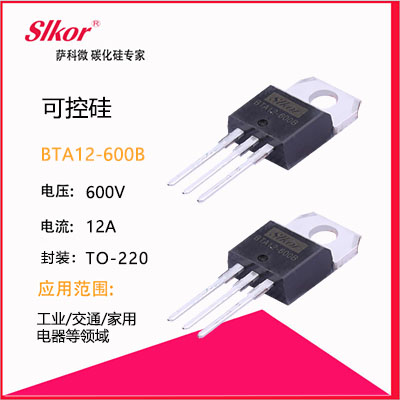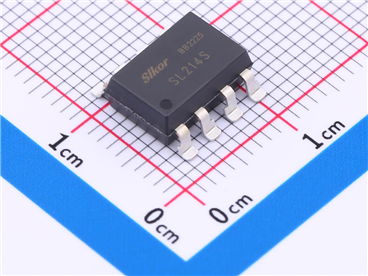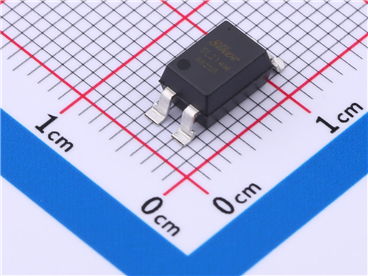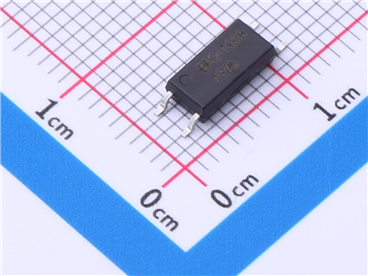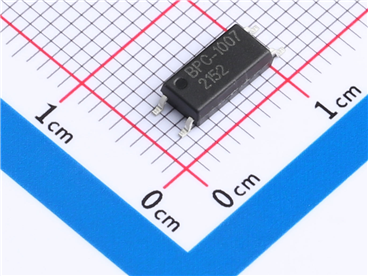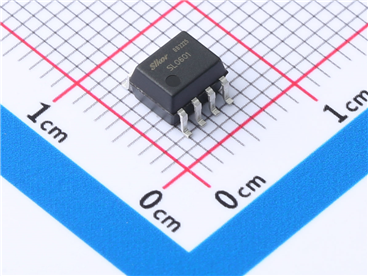How to test SCR with multimeter
There are two types of silicon controlled rectifier: unidirectional silicon controlled rectifier and bidirectional silicon controlled rectifier, both of which have three electrodes. The unidirectional silicon controlled rectifier has a cathode (K), an anode (A) and a control electrode (G). Two-way SCR is equivalent to two single SCR in reverse parallel. That is, one unidirectional silicon anode is connected side by side with another cathode, and its leading-out end is called T2 electrode; one unidirectional silicon cathode is connected with another anode, and its leading-out end is called T2 electrode, and the rest are control electrodes (G).
1. Distinguish between unidirectional and bidirectional SCR: First, measure the two poles. If the positive and negative measuring hands do not move (R× 1st gear), which may be A, K or G, A pole (for unidirectional thyristor) or T2, T1 or T2, G pole (for bidirectional thyristor). If one of the measurement instructions is tens to hundreds of ohms, then it must be a unidirectional thyristor. The red pen is connected to the K pole, the black pen is connected to the G pole, and the rest are the A poles. If the forward and reverse measurement instructions are tens to hundreds of ohms, it must be a triac. Then turn the knob to R× 1 or R× Test again in 10th gear. One of them must have a slightly larger resistance value, so the larger red pen is connected to the G pole, the black pen is connected to the T1 pole, and the rest are the T2 poles.
2. Performance difference: Turn the knob to R× First gear. For 1~6A unidirectional SCR, the red pen is connected to the K pole, the black pen is connected to the G pole and the A pole at the same time, and the distance between the black pen and the A pole is kept when the G pole is disconnected. The pointer should indicate tens of ohms to one hundred ohms, when the thyristor has been triggered, and the trigger voltage is low (or the trigger current is low). Then turn off the A pole instantly and turn it on again. The pointer should return to the ∞ position, indicating that the SCR is good.For 1~6A bidirectional thyristor, the red pen is connected to the T1 pole, the black pen is connected to the G pole and the T2 pole at the same time, and the G pole is disconnected on the premise that the black pen is not separated from the T2 pole. The pointer should indicate tens to hundreds of ohms (depending on the thyristor current and different manufacturers). Then, switch the two strokes, and repeat the above steps to measure once. The pointer indicates that it is slightly ten to tens of ohms larger than the last time, indicating that the thyristor is good and the trigger voltage (or current) is small.
If the G pole is turned off when the A pole or T2 pole is turned on, and the pointer immediately returns to the ∞ position, the trigger current of the thyristor is too large or damaged. For unidirectional silicon controlled rectifier, the lamp should light up when the switch K is closed, and the lamp will still go out when the switch K is turned off, otherwise the silicon controlled rectifier will be damaged.
For bidirectional thyristor, close switch K, the lamp should be on, and open K, the lamp should not stop. Then connect the battery in reverse, and repeat the above steps, all with the same result, which means it is good. Otherwise, the device is damaged.
Company Tel: +86-0755-83044319
Fax/fax:+86-0755-83975897
Email: 1615456225@qq.com
QQ: 3518641314 Manager Li
QQ: 332496225 Manager Qiu
Address: Room 809, Block C, Zhantao Technology Building, No.1079 Minzhi Avenue, Longhua New District, Shenzhen
